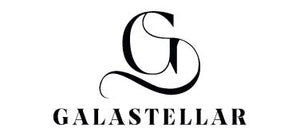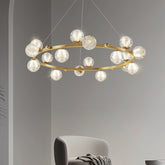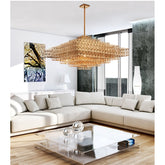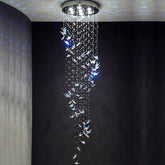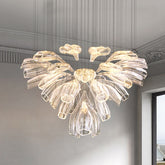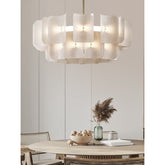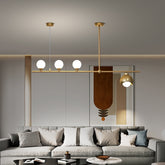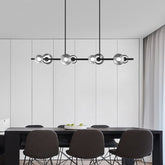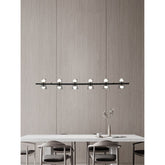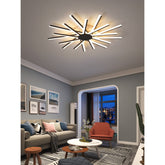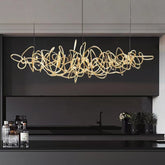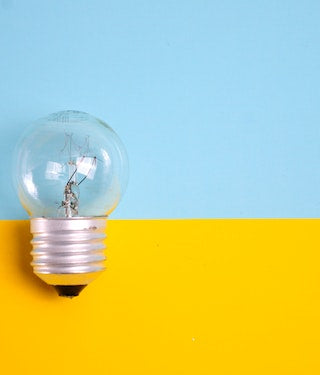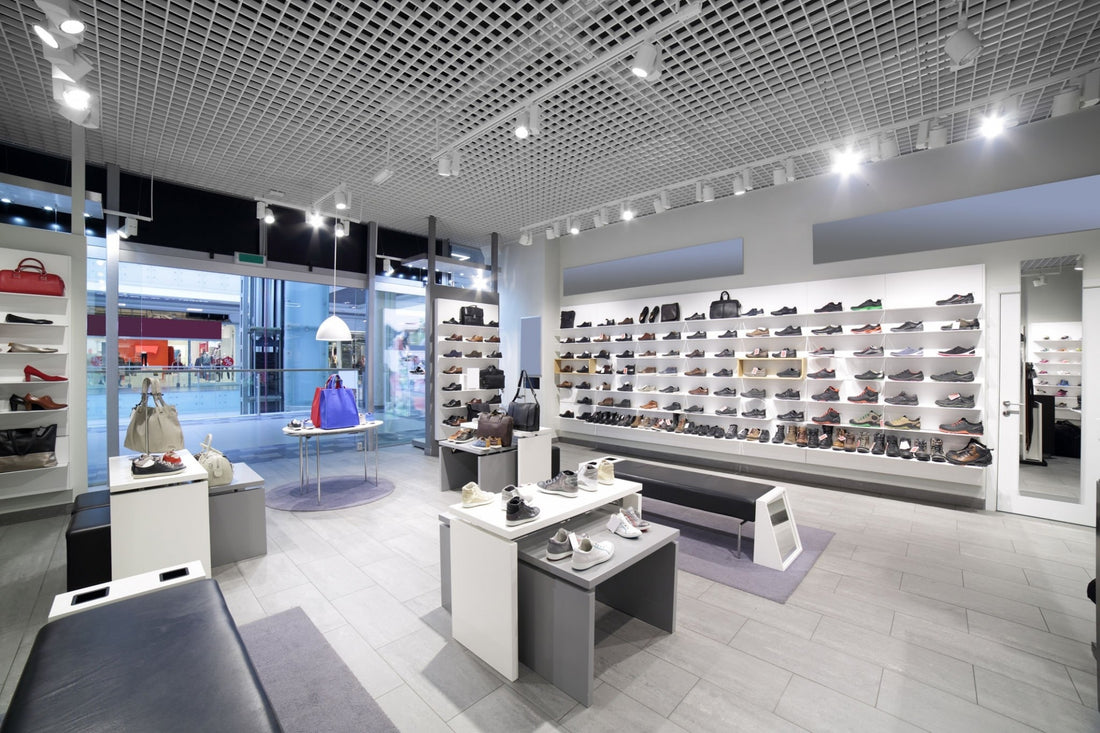How Well-designed Lights in The Shop can increase your sales
Have you ever walked into a shop and immediately felt drawn to certain products? Have you ever wondered why you felt more inclined to make a purchase in one store over another? Believe it or not, the answer may lie in the lighting design.
Good lighting is crucial for creating an inviting and attractive atmosphere in a shop. It can highlight merchandise, create a welcoming ambiance, and ultimately increase sales. In fact, studies have shown that well-designed lighting can improve sales by up to 30%.
But what makes lighting "well-designed"? It's not just a matter of turning on some overhead lights and calling it a day. Lighting design involves careful consideration of factors such as color temperature, brightness, and placement. By creating a lighting plan tailored to your shop and merchandise, you can effectively showcase your products and create a shopping experience that encourages customers to make purchases.
In this article, we'll explore the importance of good lighting in a shop and how well-designed lights can increase sales. We'll delve into the psychology of lighting, discuss different types of lights, and provide tips for creating a lighting plan that showcases your merchandise and creates an inviting atmosphere. So, let's shed some light on the importance of lighting in retail spaces!
Types of Lights for Retail Spaces
When it comes to lighting design in retail spaces, there are various types of lights to consider. Each type has its own unique benefits and can be used to create different moods and effects in a shop.
One type of light commonly used in retail spaces is fluorescent lighting. This type of lighting is energy-efficient, long-lasting, and provides bright and even lighting. It's ideal for shops with a lot of overhead lighting or large spaces that require a lot of light.
Another type of lighting to consider is LED lighting. LED lights are becoming increasingly popular in retail spaces due to their energy efficiency, long lifespan, and versatility. LED lights come in a variety of colors, and can be used to create unique effects that enhance the shopping experience.
Halogen lighting is another option, and is often used for highlighting specific products or creating a warm and inviting atmosphere. Halogen lights are known for their high color rendering index (CRI), which means they display colors accurately and in a way that is pleasing to the eye.
In contrast to artificial lighting, natural lighting can also be used effectively in retail spaces. Large windows or skylights can provide natural light that creates a welcoming and inviting atmosphere. Natural light can also be used to showcase merchandise, particularly for products that benefit from natural lighting such as plants, jewelry or clothing.
Overall, choosing the right type of lighting for your shop depends on several factors, such as the size of the space, the type of merchandise being sold, and the desired ambiance. Understanding the benefits and differences of each type of lighting can help business owners make informed decisions about their lighting design.
The Psychology of Lighting
The psychology of lighting is a fascinating and complex topic, and plays a significant role in consumer behavior. It's no secret that lighting can affect our mood, perception, and decision-making. In retail spaces, the right lighting can create an atmosphere that encourages customers to linger, explore, and ultimately make purchases.
One way in which lighting affects consumer behavior is by influencing mood. Bright and cool lighting can create a sense of energy and excitement, while warm and dim lighting can create a cozy and intimate atmosphere. Depending on the type of merchandise being sold, different moods may be more conducive to making purchases.
Lighting can also affect perception, by highlighting certain products and creating a sense of depth and dimension in a shop. Spotlights or directional lighting can be used to draw attention to specific products, while diffused lighting can create an even and balanced ambiance.
In terms of decision-making, lighting can also play a role in influencing customer choices. For example, lighting that is too bright or harsh can make customers feel uncomfortable and rushed, which can discourage them from making purchases. On the other hand, lighting that is too dim or poorly placed can make it difficult for customers to see and evaluate products, which can also discourage purchases.
Overall, understanding the impact of lighting on mood, perception, and decision-making is crucial for creating an effective lighting plan in retail spaces. By using lighting strategically, business owners can create a shopping experience that is welcoming, engaging, and encourages customers to make purchases.
Creating a Lighting Plan
Creating a lighting plan for a shop involves careful consideration of several factors, such as color temperature, brightness, and placement. Here are some steps to follow when creating a lighting plan:
- Determine the purpose of the space: The lighting plan should align with the overall purpose and branding of the shop. For example, a luxury boutique may require warm, low-level lighting to create a cozy and intimate atmosphere, while a sports store may need bright, even lighting to showcase its products.
- Consider the merchandise: Different types of merchandise may require different types of lighting. Clothing stores may need warm, diffused lighting to make fabrics look more appealing, while jewelry stores may require bright, directional lighting to highlight details and shine.
- Determine the color temperature: The color temperature of the lighting can greatly impact the mood and atmosphere of a shop. Warmer temperatures can create a cozy and intimate atmosphere, while cooler temperatures can make the space feel more energized and modern.
- Decide on brightness levels: Brightness levels can also greatly impact the mood of the space. Too much brightness can be overwhelming and uncomfortable, while too little brightness can make it difficult for customers to see products. Strike a balance that showcases products without overwhelming customers.
- Consider placement: Lighting placement can greatly affect the perception of products in the space. Highlight specific products or displays with directional lighting, while using diffused lighting for a more even and balanced atmosphere.
By following these steps and considering the unique needs of your shop and merchandise, you can create a lighting plan that enhances the shopping experience and encourages customers to make purchases. Don't be afraid to experiment with different types of lighting and placements to find the perfect balance for your space.
Showcasing Merchandise
Properly showcasing merchandise is a critical component of retail success, and lighting can be a powerful tool in achieving this goal. Lighting can be used to highlight the best features of a product, create contrast, and add depth and dimension to displays.
Different types of products require different lighting techniques to showcase them effectively. For example, clothing stores may use warm, diffused lighting to make fabrics look more inviting and soft, while jewelry stores may use directional lighting to showcase the sparkle and shine of their products.
In addition to considering the type of product being showcased, it's also important to consider the color of the product and the surrounding space. Lighting can be used to create contrast and make products stand out, but it's important to ensure that the lighting doesn't distort or alter the color of the product.
Another consideration when showcasing merchandise is the placement of the lighting fixtures. Depending on the product and the display, fixtures may need to be placed strategically to create the desired effect. For example, overhead lighting may be used to create an even and balanced atmosphere, while spotlights can be used to draw attention to specific products or features.
Ultimately, the key to showcasing merchandise effectively with lighting is to strike a balance between creating an inviting and engaging atmosphere while still allowing the products to be the star of the show. By experimenting with different lighting techniques and placements, business owners can create displays that entice customers and encourage them to make purchases.
Creating an Atmosphere
Lighting is not only important for showcasing merchandise, but it can also be used to create a specific atmosphere in a shop. Different types of lighting can be used to achieve different moods and enhance the overall shopping experience for customers.
For example, warm, low-level lighting can create a cozy and intimate atmosphere, making customers feel more relaxed and comfortable. This type of lighting is often used in luxury boutiques, spas, and restaurants to create a sense of indulgence and relaxation.
In contrast, bright and even lighting can create a more energized and livelier atmosphere, making customers feel more alert and engaged. This type of lighting is often used in sports stores, electronics stores, and other high-energy retail environments to create a sense of excitement and urgency.
The color temperature of the lighting can also greatly impact the mood of the space. Warm, yellow-toned lighting can create a cozy and intimate atmosphere, while cooler, blue-toned lighting can make the space feel more modern and energized.
Lighting can also be used to highlight specific areas or products within the shop, creating a sense of depth and interest. For example, spotlights can be used to draw attention to high-ticket items or new arrivals, while diffused lighting can be used to create a more even and balanced atmosphere throughout the shop.
Ultimately, the key to creating an atmosphere with lighting is to consider the purpose of the space and the desired mood, and to use lighting techniques that align with those goals. By experimenting with different lighting types, color temperatures, and placements, business owners can create a shopping environment that is both inviting and engaging for their customers.
Final Words
As you have now seen, he importance of good lighting in a retail environment cannot be overstated. Well-designed lights can increase sales, create a pleasant atmosphere, and showcase merchandise effectively. By understanding the different types of lights available, the psychology of lighting, and the importance of creating a lighting plan, business owners can optimize their lighting to improve the overall shopping experience for their customers. Whether aiming to create a cozy and intimate atmosphere or a bright and energized environment, using lighting effectively can help businesses stand out and increase sales. With the right lighting plan and techniques, any shop can enhance its visual appeal and create a shopping experience that customers will remember and return to.
References
- "The Impact of Store Lighting on Sales and Perception." Pacific Gas and Electric Company. 2018. https://www.pge.com/pge_global/common/pdfs/save-energy-money/business/lighting/impact-of-store-lighting-on-sales-and-perception.pdf
- "Lighting Design for Retail Spaces." LEDVANCE. 2020. https://www.ledvance.com/professional/blog/2020/lighting-design-for-retail-spaces.jsp
- "Lighting and Merchandising." Lighting Research Center, Rensselaer Polytechnic Institute. 2019. https://www.lrc.rpi.edu/programs/nlpip/lightingAnswers/retail/lightingAndMerchandising.asp
